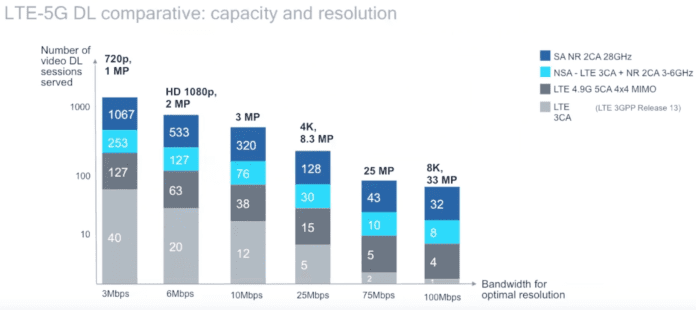A deep dive into the enhanced mobile broadband use case of 5G New Radio
Legendary British science fiction writer and futurist Sir Arthur C. Clarke wrote in a 1973 revision to his essay “Hazards of Prophecy: The Failure of Imagination” that, “Any sufficiently advanced technology is indistinguishable from magic.” With dynamic support for a variety of spectrum types, licensed, unlicensed and shared, in support of three primary use cases–enhanced mobile broadband, massive IoT and mission critical communications–the 5G New Radio standard promises to be many things for both consumers and enterprises. Relative to 5G, “Is this magic?,” Nokia Head of 5G Leadership and Chief Architect of Nokia Mobile Networks Volker Ziegler asked. “I would think it is.”
So, if the planned deliverable of the 5G NR spec, set for completion next year, is something that would appear as magic, what’s the roadmap to deliver on that promised experience? Ziegler discussed this in a recent webinar focused on delivery of the enhanced mobile broadband use case. “It all starts with mobile broadband,” he said. “In the big picture this is about more capacity. It’s about higher user throughput and dramatically so. It’s truly about flexibility…in conjunction with truly tailoring network resource by use case, by user and use case category. 5G New Radio will truly deliver new levels of capability and efficiency. It’s quite an exciting envelope of capabilities. When you look at public attention, and kind of the race we’ve seen in the last several years in terms of who sets the next speed record…it’s about multi-gigabit per second peak rates.” But, “This is not just about the top speed.” Latency, reliability and lower cost per bit are all major influencers, Ziegler said.
Noting the value of low-band, mid-band and millimeter wave frequencies in delivering the next generation of mobile networking technology, Ziegler forecasted “a powerful storyline of spectrum utilization.” Taking a global perspective, “It looks as if there’s a pattern of consensus emerging. Looking at the pattern as we now see, it looks reasonably OK in terms of limiting the number of variants. There’s a lot of allocations and bands allocated around 3.5 [GHz} for 5G as well as the 28 [GHz] and 37 [GHz] range, then the low-end very consistent…the 600 [MHz], 700 MHz allocations.”
He gave the example of a key mobile use case, which is video streaming, something poised to continue to deliver increasingly high resolution experiences as 4K and 8K device support and content becomes available. “The more aggressive the resolution gets, and therefore the user experience and expectation gets–and we haven’t seen the end of this year–the more 5G will make the difference. If one day we truly go to 4K or 8K type of devices, it’s very obvious from this that LTE won’t cut it anymore and we definitely will need 5G.”
Watch Ziegler and Rasmus Hellberg, senior director of technical marketing at Qualcomm Technologies, conduct the webinar titled “Driving 5G NR deployments for enhanced mobile broadband in 2019 and beyond.”

